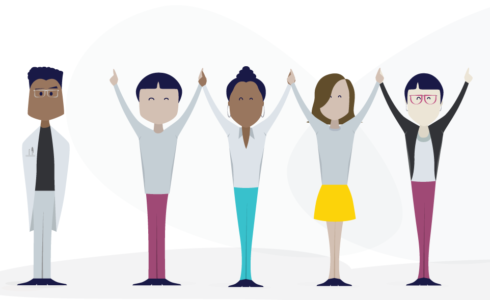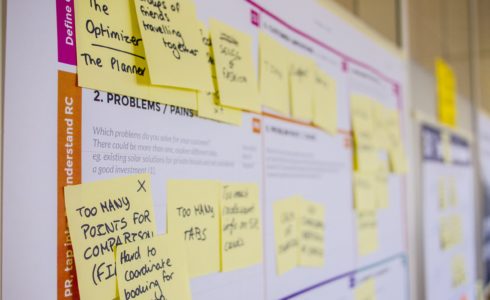Onboarding. It takes a lot of time, labor and planning to truly onboard an employee. So why do it?
The answer: You can’t afford not to. Benefits of onboarding new employees include the following:
- Improvement in year-over-year revenue by 60 percent (Aberdeen)
- Increase in year-over-year customer satisfaction by 63 percent (Aberdeen)
- Increase in retention by 25 percent (SmartHRInc)
- Improvement of performance levels by up to 11 percent (SmartHRInc)
- Increase in new hire productivity by 54 percent (Aberdeen)
We say, take onboarding to the next level. Invest a little more time and get an even larger return. As with most aspects of the workplace, personalizing the process will elevate it beyond simply orienting a new employee. Using the trait and temperament insight gained through talent assessments you can predict how one will behave, both in team settings and individually as well as what motivates them to take initiative. With this information you’ll know exactly how to orient your employee to maximize engagement, speed up productivity and socialize your new hire the way they’d like.
You can use a behavior assessment like McQuaig to create an onboarding process that’s more likely to connect because it’s tailored to the new hire’s personality.
Before Day One
The onboarding process begins as soon as an individual glimpses your job description. From that very first point of contact, potential ideal candidates should be able to picture themselves as part of your organization.
The McQuaig 3-Step Process creates an ideal candidate profile using the McQuaig Job Survey as a benchmark. The report you receive from the McQuaig Job Survey is the ideal behavioral profile to succeed in the role and can be used to:
Build a job description: Including how they’ll apply their traits to succeed, so they’ll better picture themselves in the role.
Customize your career website: To speak to the behavioral attributes you’re seeking. You can also highlight things that matter to your ideal candidates and highlight what you don’t want so other candidates can self-deselect.
Tailor the interview approach to the candidate: The understanding you’ll have of the candidate will allow you to tailor your interview approach and communicate the elements of your employer brand that are most appealing to them. This goes a long way in helping the hire connect with the organization at this early stage.
Use behavior-based interview questions for cultural fit: Not only will these questions give you an idea of how this person will actually behave on the job, you’ll also know whether or not they’ll fit into your workplace culture. Does your organization tend to work analytically? An employee who works off emotion may have trouble adapting.
Share colleagues behavioral profiles (and vice-versa): The new hire can get to know their teammates by learning some information from their new colleagues’ behavioral profiles (and vice-versa). This can make it easier to connect in person.
Day 1
Success depends on understanding what to do, the people you work with, and their expectations. An assessment removes the majority of the guesswork to make this an easier time.
Adapt your onboarding program to their personality: This will ensure that your employee understands and engages with what they’re learning. If they’re highly sociable, plan to onboard them in a way that includes plenty of interaction. If they’re on the dominant side, give them a goal-oriented task to complete such as a presentation.
Some of the profile sections that will help you in this include:
- Motivating factors – understand how to best engage with them to achieve results
- Strategies for coaching and development – a “Dos & Don’ts” report with suggestions for best approach
- Learning style – critical insights for training
- Team approach – understand how they work in a team and their impact on team dynamics
Provide new hire with McQuaig Profiles: On Day 1, provide your hire with their McQuaig profile and their manager’s profile to read during Week 1.
After Day 1
A huge part of the success of onboarding is about the relationships with their colleagues and manager. McQuaig can help you:
Discuss the manager/employee relationship: On Day 1 you gave your hire a copy of their profile and their manager’s. Week 1 is the perfect time for a meeting to discuss their styles, preferences and how they can most effectively work together.
Learn the team relationship: Equally as important to the employee/manager relationship is the new hire/team relationship. Use the Team Approach Report to understand how the hire will work in a team and how he or she will work with his or her teammates based on their profiles.
Provide employees with their McQuaig Self-Development report: This is a versatile assessment that empowers employees to self-manage their development. It offers enlightening personal insights; actionable feedback and a process to ensure development is aligned to organizational goals.
Meet with employee about report: A meeting with their manager to discuss and set goals around key strengths/development areas can help keep engagement high. Use results to drive coaching and development activity by, increasing self-awareness, enhancing leadership development, and career counseling.
Leverage their strengths: Increasing self awareness will allow employees to understand what they do well and where to apply it.
Target development areas for improvement: Use the Personal Action Plan worksheets that the employee can use to steer their own development.
What best practices do you use when onboarding?
{{cta(‘5f7a46a2-f933-4ae3-b583-c84abe817f91’)}}
























